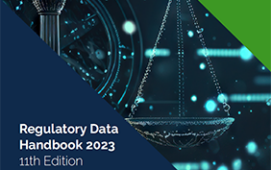By Ken Krupa, Chief Technology Officer, MarkLogic
The standard corporate financial reporting language known as eXtensible Business Reporting Language, or XBRL, has been around for more than 20 years. Based on the eXtensible Markup Language (XML) of the World Wide Web Consortium (W3C), XBRL is a common global mechanism for communicating and sharing data across business systems. It has been adopted for the reporting of accounting, finance, tax, risk and climate change data, as well as being increasingly used for enterprise data management. It is used by the United States Securities and Exchange Commission (SEC), the Committee of European Banking Services, as well as the UK’s HM Revenue and Customs (HMRC) and Companies House. But why is XBRL arguably more important now than ever before?
Digital transformation is not a new term, but its impact is being felt across industries. It is therefore unsurprising that business reporting, accounting and auditing are among the next in line to be forced to adapt to the digital age. On 1 January 2020, the European Securities and Markets Authority (ESMA) will issue new guidance for corporate reporting under the European Single Electronic Format (ESEF). From this date, all European Union issuers will be required to use XBRL for filing financial reports. In doing so, ESMA will effectively mandate that all consolidated financial statements conforming to the International Financial Reporting Standard (IFRS) be rendered machine-readable.
There is good reason for this. Corporate reporting cannot remain founded in paper in a digital age. Annual reports are a key part of any company’s understanding of its financial situation. It is the belief of the ESMA regulators that moving all corporate reporting to a standardised digital format will improve transparency, as well as facilitating the analysis, comparison and accessibility of annual financial statements to internal and external stakeholders among the general public. Regulators have recognised this shift to digital and are doing what they can to embrace it. Now it’s time that businesses take note as well.
The implications of this regulation go beyond a standard digital reporting format though. On the compliance side, ESEF will require all businesses affected to be able to demonstrate taxonomy, or the structure that was used to classify their financial information, which will lead to better data governance. However, there is also a significant practical benefit to this change. Adopting XBRL as a corporate reporting language removes the often arduous and occasionally error-stricken process of manually analysing large amounts of corporate financial information.
In making data machine-readable through XBRL, the ESEF directive will make the financial information of more than 5,000 companies in the European Union easily transferrable across technologies that natively process XML, such as NoSQL databases. In the UK, according to a white paper by the Financial Reporting Council, more than two million companies already report using Inline XBRL (iXBRL) to HMRC, while another two million file their accounts using iXBRL with Companies House. However, ESEF will require many more companies, including all listed companies, to file digital accounts with XBRL in the near future.
This is a sign of things to come in the UK and across the globe. The Bank of Japan was among the early adopters, but more recently the Bank of England announced a Proof of Concept (PoC) project to explore how XBRL could help it to significantly reduce the cost of change, drive resource efficiencies and improve speed and flexibility of access to large quantities of regulatory data from financial institutions. The NTT DATA-led PoC, which uses a MarkLogic NoSQL database at its core, gives users the ability to browse data on a web application whilst masking the perceived complexity of XBRL. Early indications show that the PoC is providing significant benefits in the speed at which regulatory data is being imported, stored, analysed and visualised.
Despite this shift towards digital reporting as a standard, many businesses may be thinking that this regulation is a long way off and that now is too early to act. That may be a workable strategy for some organisations, but for most businesses that want to make better use of the financial data at their disposal, shifting to XBRL reporting now will see them reap immediate rewards, beyond regulatory mandates. All too often, data for internal reporting, statutory reporting, tax reporting and prudential reporting is stored in silos, preventing businesses from making informed decisions about corporate data as a whole. However, a NoSQL database that uses XBRL can circumvent these issues.
The Financial Reporting Council has echoed this call to action. In its report, it recommends that “Compliance teams should embrace the adoption of the new ESEF standard as an opportunity to take a leap forward in digitalising the business reporting process, rather than seeing the new ESMA regulation as a reporting burden.” In short, forward-thinking businesses will see this change as a positive means to get their data to meet compliance issues now and in the future, and to ensure that data is always visible and available for contextual analysis.
Solving these data challenges requires a database that empowers businesses to integrate all of their data with minimal disruption to the business. We recommend a design approach for reporting solutions that ensures agility and flexibility, while supporting multiple business outcomes that leverage the same integrated data sets. The solution should deliver a regulatory reporting platform that incorporates best practices and operational effectiveness and allows for adaptive growth in scope and scale. The design goal should not be to remedy one-off reporting requests, but to build in a capability to respond to emerging requirements with relative ease and cost efficiency.
As many companies have already discovered, there is an easy way to bring all these data silos together. Using an Operational Data Hub (ODH) for financial data – built on a flexible, enterprise-grade NoSQL database with integrated Google-like search – can pay dividends for data challenges where the data and requests from regulators change over time. Now is the time to act.
Subscribe to our newsletter




